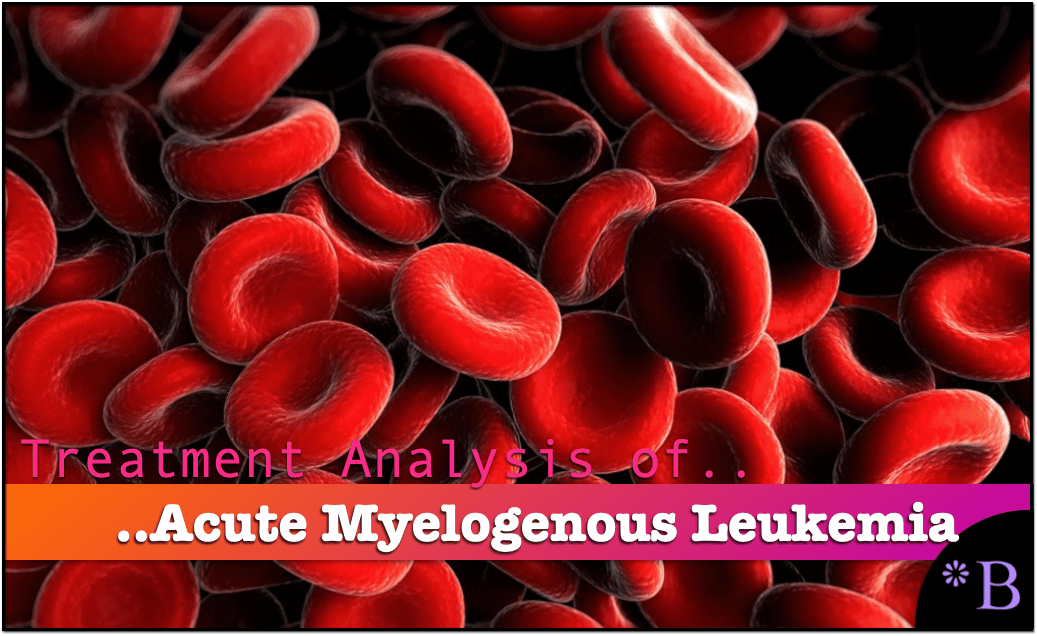Treatment Analysis for Acute Myelogenous Leukemia
Executive Summary
- This article analyzes treatment options for Acute Myelogenous Leukemia.

Cancer Type
Acute Myelogenous Leukemia
AKA, acute myeloid leukemia, acute myeloblastic leukemia, acute granulocytic leukemia, and acute nonlymphocytic leukemia.
Cancer Description
- AML is a cancer of the blood cells and the bone marrow. Blood cells are manufactured in the bone marrow, so dysfunction of bone marrow due to cancer results in anemia in the patient.
- The process is the bone marrow switches production too heavily towards white blood cells, which are immunological cells, and too lightly towards red blood cells. Additionally, many of the overproduced white blood cells are not functional.
- Red blood cells, white blood cells, and platelets begin their lives as myeloid stem cells. Therefore this category of cancer is an error in the proportion of cells converted from myeloid stem cells. Hence its naming, which describes the dysfunction of the myeloid stem cell process.
A Tumorless Cancer
Most cancers develop into tumors. However, leukemias do not develop tumors. This is why radiotherapy is rarely used for AML.
Treatment Options
- Chemotherapy
- Immunotherapy
- Bone Marrow Transplantation — but in rare cases, and usually when the patient is young.
Survival Statistics
This quote on the topic of AML survival statistics is from the article Role of Measurable Residual Disease in Older Adult Acute Myeloid Leukemia.
Acute myeloid leukemia (AML) can be diagnosed at any age but mainly presents in older adult patients, with a median age at diagnosis of 68 years. Although the prognosis of younger AML patients has improved over the past few years, the treatment of older adult patients remains challenging. The 5-year survival rate is 35%~40% for patients who are younger than 60 years and 5%~15% for patients who are older than 60 years; this difference is attributed to the higher incidence of unfavorable cytogenetics, higher expression of multidrug resistance, higher relapse rate, and lower ability to tolerate intensive chemotherapy, even in those who achieved complete remission (CR) in older adult patients. Even the tiniest remnants in older adult AML patients may lead to relapse, and each relapse may be associated with a decreased probability of long-term survival.
Notice that five-year survival for these patients is low for those above 60, and the median age of diagnosis is 68. This means that 5 to 15-year survival is the norm. Recall also that most people diagnosed with AML go through one or multiple conventional treatments. This means that these poor survival statistics are with conventional treatments.